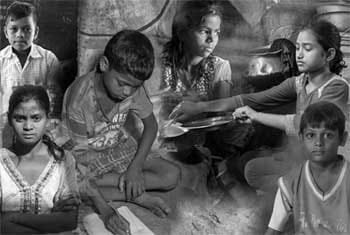INVC NEWS
New Delhi : Navratri, the festival dedicated to the worship of the Goddess, is celebrated with immense zeal and devotion across the country, spanning nine auspicious days. During this time, various forms of the Goddess are revered, and fasting is observed to seek her blessings. It is believed that worshipping Goddess Maa Durga during Navratri yields the most auspicious results. While there are four Navratris in a year, Sharadiya Navratri holds a special place in our hearts.
This festival commences on the Pratipada Tithi of Shukla Paksha in the Ashwin month and extends for nine days. This year, Sharadiya Navratri is set to begin on Sunday, October 15th and conclude on October 24th. On the first day of Sharadiya Navratri, devotees traditionally establish a Kalash (sacred vessel) to kickstart the celebrations. In this article, we will guide you through the complete process of setting up the Kalash for Sharadiya Navratri. Let’s dive in!
The Sacred Act of Installing the Kalash
On the inaugural day of Sharadiya Navratri, begin by waking up early in the morning. After your ablutions, don clean attire and meticulously cleanse your place of worship, sprinkling it with holy Gangajal. Place a vibrant red cloth on your sacred space and set aside some chalk. In an earthen pot, sow barley seeds, and position an urn filled with water beside it. Enhance the sanctity of this arrangement by adorning it with fresh mango leaves in the shape of a Swastik, an auspicious symbol. Further, place whole betel nuts, coins, and Akshat (rice grains) as offerings. Wrap a vibrant chunri around a coconut and secure it with a kalava (sacred thread). Rest this coconut atop the urn and invoke the divine presence. To complete the ritual, illuminate the Kalash with a traditional lamp.
The Significance of Establishing the Kalash
The act of setting up the Kalash during Sharadiya Navratri carries profound spiritual significance. The Kalash symbolizes the divine energy of Goddess Durga, and its establishment marks the commencement of the nine-day worship. The water in the urn represents the life-giving force, and the barley seeds symbolize fertility and growth. Mango leaves arranged in the Swastik pattern signify auspiciousness and prosperity, while the offerings of betel nut and coins represent abundance and wealth. The coconut wrapped in chunri represents the head of the Goddess, a focal point for reverence. Lighting the lamp symbolizes dispelling darkness and inviting the light of knowledge and wisdom.
Conclusion
Sharadiya Navratri is a time of spiritual awakening and devotion. The act of establishing the Kalash is not just a ritual but a profound expression of faith and reverence towards Goddess Durga. As you prepare to celebrate this sacred festival, remember the significance of each element in the Kalash and the divine blessings it brings.
FAQs (Frequently Asked Questions)
1. What is the significance of Sharadiya Navratri?
- Sharadiya Navratri is a nine-day festival dedicated to the worship of Goddess Durga, symbolizing the victory of good over evil.
2. Why is the Kalash established on the first day of Sharadiya Navratri?
- The Kalash represents the divine energy of Goddess Durga and marks the beginning of the nine-day worship.
3. What is the importance of the Swastik symbol during Kalash installation?
- The Swastik is an auspicious symbol that signifies prosperity and well-being.
4. Can I use any container for the Kalash, or is it traditionally an earthen pot?
- While traditionally an earthen pot is used, you can use any clean and auspicious container for the Kalash.
5. Are there specific rituals to follow while lighting the lamp for the Kalash?
- Yes, there are traditional rituals associated with lighting the lamp, including offering prayers and mantras to invoke the divine presence.















